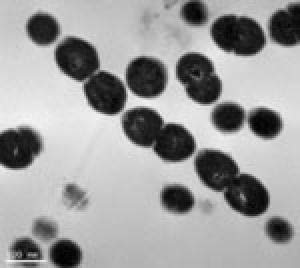Decoding the genome of oral pathogens
Virginia State University researchers have decoded the genome of bacteria that are often present in the mouth of healthy people, which can cause a deadly heart infection if it enters the bloodstream.
This study allows scientists to better understand the species of Streptococcus sanguinis , and develop new strategies for treating and preventing infection.
S. sanguinis , a type of bacteria often present in the mouth, one of the microorganisms that causes plaque formation. In general, S. sanguinis is harmless. However, if it enters the bloodstream, possibly through a small cut or wound in the mouth, it can cause bacterial infection of the pericarditis, a deadly serious heart infection.
People who have had cardiovascular problems are at increased risk of developing bacterial endocarditis. Infection can cause heart function weakness and complications such as heart attack and stroke. Therefore, before dental surgery, these patients must use high-dose antibiotics to prevent infection.

Photos of S. sanguinis by transmitted microscope (Photo: Lauren Turner / VCU)
S. sanguinis, a form of streptococci, will provide researchers with insight into its complex life cycle, metabolism and ability to enter the host to cause infection. endocardial bacteria.
'We can apply information to come up with new treatments and prevention strategies to protect against this disease' according to the team leader, Dr. Francis Macrina, VCU vice president of the team. study said. 'Genome analysis revealed some surprising proteins on the S. sanguinis cell surface, the cell surface will be the new target for drugs and antibiotics. We are ready to work to pursue these instructions. '
Although not directly related to tooth decay or gum disease, S. sanguinis is a prominent member of plaque. 'Genome studies of this organism will also help us better understand plaque formation and the origin of oral diseases,' added Dr. Macrina.
The team announced that the genome of the gram-negative bacterium is a circular DNA molecule containing about 2.4 million base pairs. They analyzed S. sanguinis' genome and found that it was larger than other streptococci that had been sequenced. One of the extra DNA seems to be received from other bacteria and encoded for genes that may give S. sanguinis a better chance of survival even though the oral teeth are well cleaned. If so, it could explain the recent occurrence of S. sanguinis as an important pathogen.
'The sequence of S. sanguinis gives us a comprehensive view of the biological potential of disease sources,' said Dr. Gregory A. Buck, manager of the Center for Biological Complex Research at VCU. , who also directs gene sequencing and analysis. 'This data opens a door into the internal structure of bacteria. Now, we can determine how and why these organisms can cause disease. "
The study was published in the April issue of Bacteriology, published by the American Society for Microbiology
Ngoc Thanh.
According to Virginia Commonwealth University, Dong Nai Department of Science and Technology
- Vietnam first deciphered the rice genome for the first time
- Scientists successfully decode the spider's genome
- The first successful decoding of the tomato genome
- Complete dog genome decoding helps to understand more about human disease
- US science successfully decodes the genome of wheat
- The first successful decoding of the wheat genome structure
- Wukong recognizes the benefits of decoding human genes
- Decoded the mackerel genome
- 7 signs of 'sneaking' on oral cancer
- Vingroup spent money on 1,000 Vietnamese genome sequences
- Successfully decode the genome of soybeans
- Decode the genome bamboo Moso
 Green tea cleans teeth better than mouthwash?
Green tea cleans teeth better than mouthwash? Death kiss: This is why you should not let anyone kiss your baby's lips
Death kiss: This is why you should not let anyone kiss your baby's lips What is salmonellosis?
What is salmonellosis? Caution should be exercised when using aloe vera through eating and drinking
Caution should be exercised when using aloe vera through eating and drinking